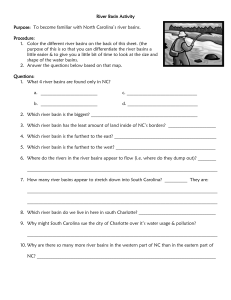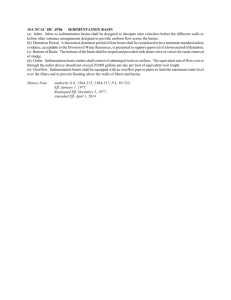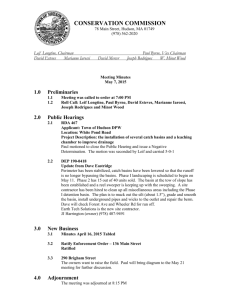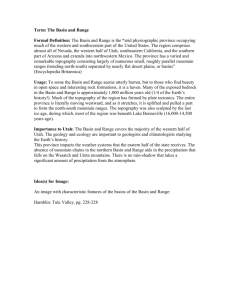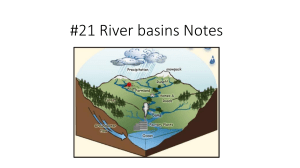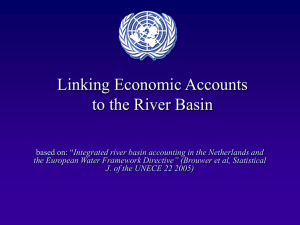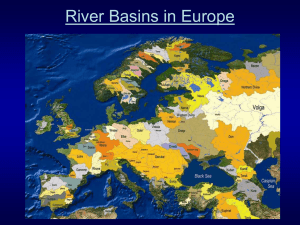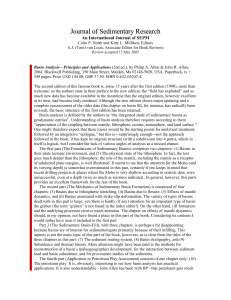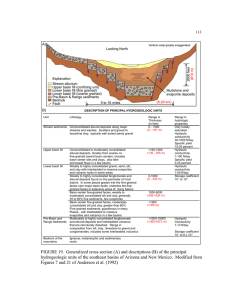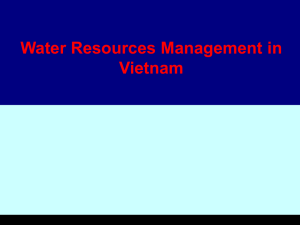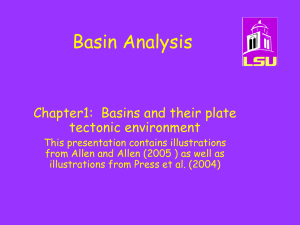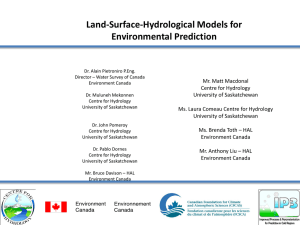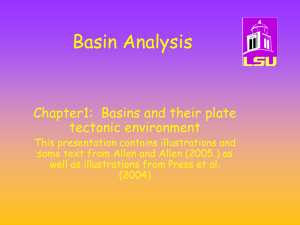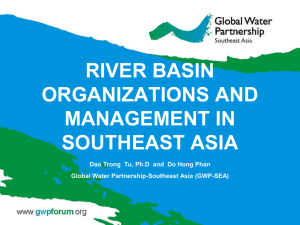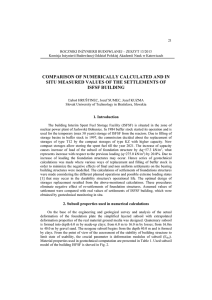Freshwater and River Basin Notes
advertisement
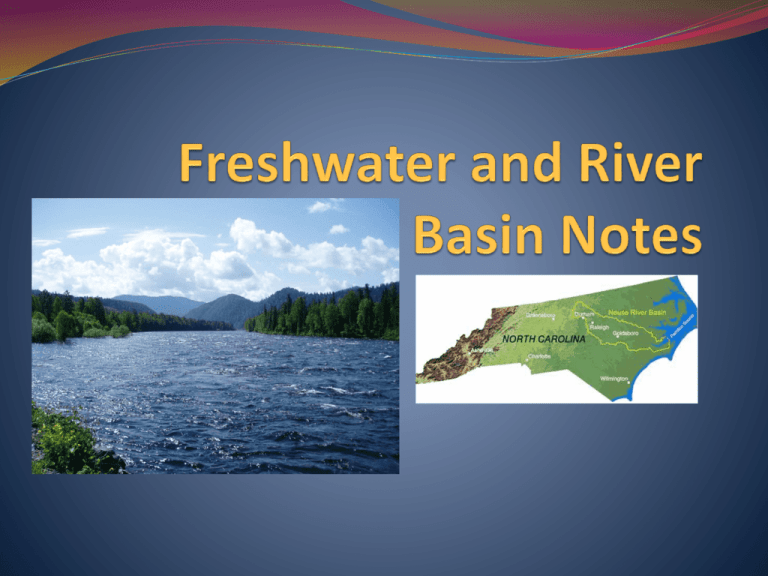
Freshwater Water is one of the most common substances on the surface of the Earth Water is the only substance on Earth that occurs naturally as a solid, a liquid, and a gas. It is often referred to as ‘the universal solvent' because so many other substances dissolve in it. This characteristic is one reason that the water encountered on Earth is rarely pure. Freshwater Water covers approximately 71% of the Earth's surface. Most of this water (97%) is not drinkable because it is saltwater. The majority of freshwater (3%) exists in ice caps, glaciers, and oceans. 77% of the freshwater is frozen. Of the 23% that is not frozen, approximately a half of a percent is available to supply living organisms with what they need to survive. The availability of water varies with local geography and allows humans to utilize water as a resource. River Basins A river basin is the portion of land drained by a river and its tributaries. It encompasses the entire land surface drained by the various streams and creeks that flow downhill into one another, and eventually into one river. The final destination of the water drained by a river basin is an estuary or an ocean. A river basin sends all the water falling on the surrounding land into a central river and out to the sea. River Basins Everyone lives in a river basin. Even if they do not live near the water, landdwellers live on land that drains to a river or estuary or lake, and their actions on that land affect water quality and quantity far downstream. There are 17 river basins in North Carolina. The topography of each basin determines the area that it drains, and whether that water: flows from creeks, rivers, springs, and aquifers flows into the Atlantic Ocean or Gulf of Mexico.

